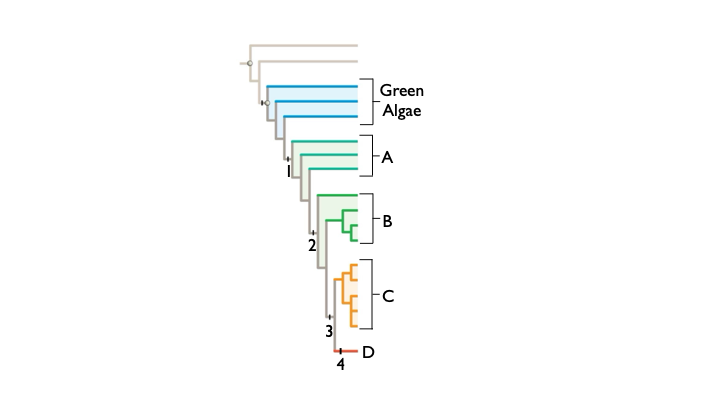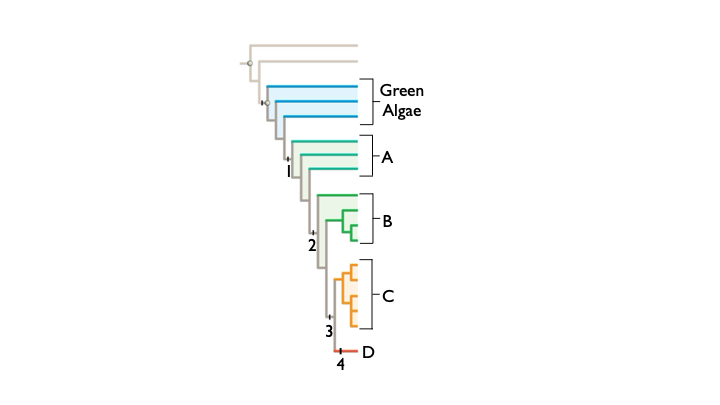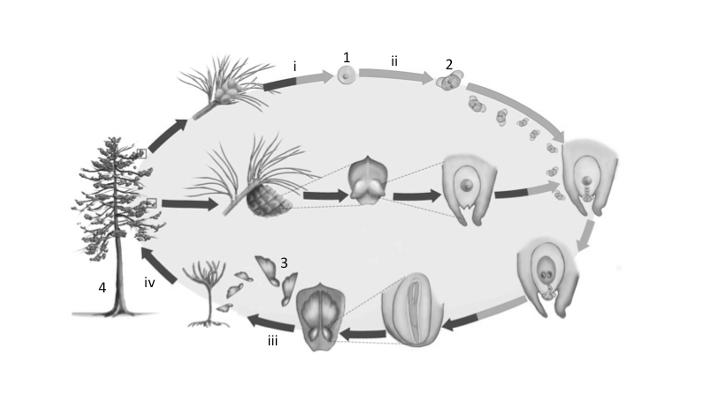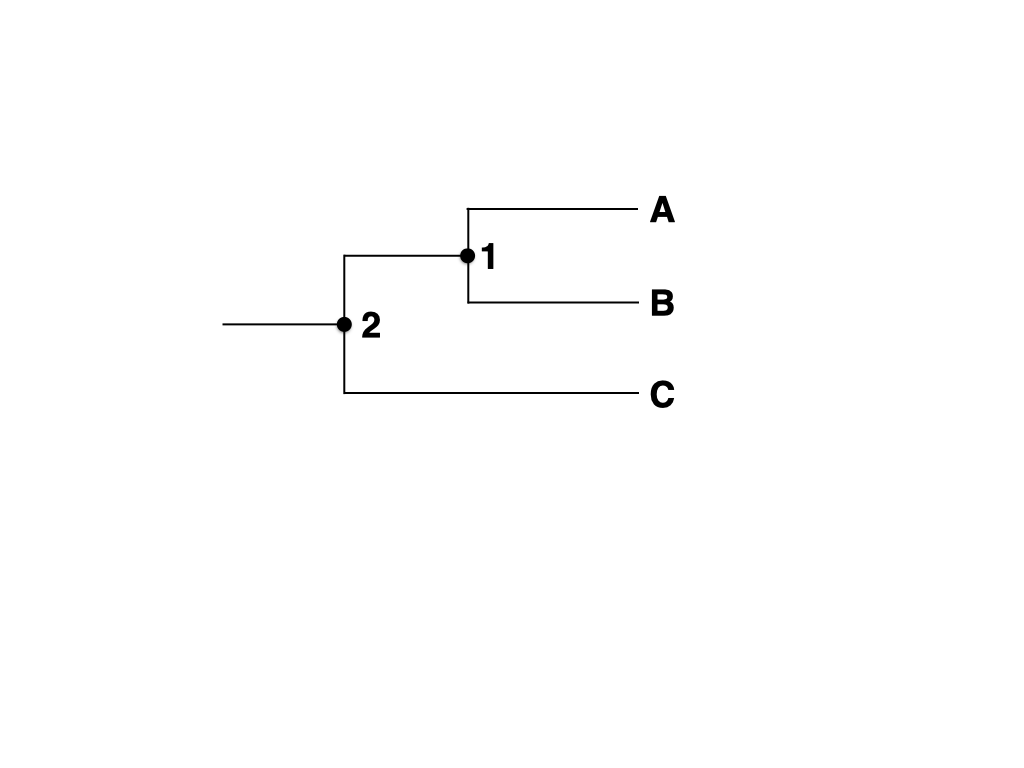wk 4-5 bio94 quizzes
1/27
Earn XP
Description and Tags
for midterm 2 exam
Name | Mastery | Learn | Test | Matching | Spaced |
|---|
No study sessions yet.
28 Terms
Flowering plants have which of the following characteristics?
a) the endosperm is a diploid representation the combines male and female genotypes
b) animals often play an important role in fertilization
c) the female gametophyte is independent of the sporophyte
d) their seeds are naked
b) animals often play an important role in fertilization
In all land plants with alternation of generations:
a) seeds act as a dispersal mechanism
b) the zygote is retained on the sporophyte
c) gametes fuse to form the gametophyte
d) there is a megaspore and a microspore
e) none of these answers are correct
e) none of the answers are correct
The process of transpiration-cohesion:
a) refers to a process of carbon fixation by chemoautotrophs
b) refers to the prokaryote origin of mitochondria
c) is driven by water pressure that helps starfish move
d) none of the other answers are correct
e) requires energy from plants
d) none are correct
What is a pollen grain?
a) male gametophyte
b) male sporophyte
c) female gametophyte
d) female sporophyte
e) egg
a) male gametophyte
sporophytes are the actual plant themselves in gymnosperms and angiosperms

Choose the answer that correctly associates the first appearance of an evolutionary innovation with a branch. (figure 28.23)
a) 1 — embryophyte; 2 — heterospory; 3 — vessels
b) 1 — alternation of generations; 3 — seeds; 4 — flowers
c) 1 — chlorophyll ‘a’; 2 — seeds; 3 — vascular tissue
d) 1 — chlorophyll ‘a’ & ‘c’; 3 — seeds; 4 — dominant gametophyte
b) 1 — alternation of generations; 3 — seeds; 4 — flowers
for c: chlorophyll ‘a’ did evolve at 1 (along with chlorophyll ‘b’) as a common ancestor of green plants, but seeds did not evolve at 2, vascular tissue did
for d: all green plants common ancestor is does not contain chlorophyll ‘c’ but ‘b’; brown algae has chlorophyll ‘c’ (think a-b-c)
for a: 1 is correct, but 2 belongs in 3 (gymnosperms and angiosperms are heterospory)
define heterospory
gymnosperm and angiosperms
1) megaspore becomes female gametophyte, produces eggs
2) microspore becomes male gametophyte, produces sperm

Which of the following first appeared on the branch labeled by number 3?
a) non-motile sperm
b) all answers are true
c) has megasporangia
d) seeds
b) all are true
non-motile sperm == has seeds, doesn’t need water
all _____ are examples of ______.
a) Bacteria; chemoheterotrophs
b) gymnosperms; land plants with non-swimming spores
c) Apicomplexans; prokaryotes
d) RNA; macromolecules that form protobionts
e) seedless vascular plants; plants with a megasporangium
b) gymnosperms; land plants with non-swimming spores
Choose the answer that has all correct associations between a group and a key evolutionary innovation that is first associated with that group.
a) brown algae — chlorophyll ‘b’; eukaryotes — mitochondria; angiosperms - seeds
b) nonvascular plants — tracheids; prokaryotes — photosynthesis; protists — nucleus
c) bacteria — photosynthesis; protists — nucleus; nonvascular plants — embryophyte
d) archaea — multicellularity; seedless vascular plants — cuticle; algae — photosynthesis
c) bacteria — photosynthesis; protists — nucleus; nonvascular plants — embryophyte
When a mosquito infected with Plasmodium first bites a human, the Plasmodium .
a) female gamete undergoes meiosis
b) gametes fuse
c) parasites infect liver cells
d) cells cause bursting of human red blood cells
e) travels to the brain, causing the infected person to sing of sea shanties
c) parasites infect liver cells

Use the diagram shown below to answer the next question.
The structure labeled ‘1’ represents what?
a) An egg.
b) A megaspore
c) A pollen grain
d) A microspore
d) A microspore
Fill in the blanks. If a zygote grows to maturity, it is a and it is .
a) Sporophyte, always the dominant form in land plants
b) Gametophyte, diploid
c) Gametophyte, haploid
d) Sporophyte, diploid
d) sporophyte, diploid
for A, sporophytes became dominant when the seedless stage and onwards (vascular, seed, flowering)
for gametophytes, they produce the sperm and egg to be made into the zygote
How does the embryo’s food source differ between gymnosperm and angiosperm seeds?
a) It is triploid in gymnosperms but diploid in angiosperms.
b) They do not differ.
c) It is vascular in angiosperms, but nonvascular in gymnosperms.
d) It is maternally derived in angiosperms but derives from both parents in gymnosperms.
e) It is maternally derived in gymnosperms but derives from both parents in angiosperms.
e) It is maternally derived in gymnosperms but derives from both parents in angiosperms.
in gymnosperms, embryos are 2n (both from momma)
in angiosperms, embryos are 3n (two from momma, one from dad)

The structure labeled ‘1’ represents what?
a) A megaspore
b) A microspore
c) An egg.
d) A pollen grain
b) microspore
an egg (n) is in the bottom right, before fertilization
a megaspore is the 3rd stage before meiosis for the female cone
a pollen grain is labeled 1
Why do some bacteria stain violet in the Gram stain, and some do not?
a) Gram-negative bacteria cause severe disease.
b) Gram-positive bacteria are chemoheterotrophs and so can metabolize the gram stain. Gram-negative bacteria are authotrophs and need not metabolize the gram stain.
c) The Gram-negative bacteria have peptidoglycan on the outside of their cell walls. Gram-positive bacteria have less peptidoglycan with an outer membrane that covers the peptidoglycan
d) Gram-positive bacteria are shaped differently than Gram-negative bacteria. Gram-positive bacteria are rod-like and Gram-negative are spherical. The stain allows the visualization of these shapes.
e) Gram-positive bacteria have peptidoglycan on the outside of their cell walls. Gram-negative bacteria have less peptidoglycan with an outer membrane to cover the peptidoglycan.
e) Gram-positive bacteria have peptidoglycan on the outside of their cell walls. Gram-negative bacteria have less peptidoglycan with an outer membrane to cover the peptidoglycan.
Why are Protists sometimes referred to as an “artificial” grouping?
a) Protists are not monophyletic, and thus don’t represent a “natural” phylogenetic grouping.
b) Some protists are unicellular, whereas others are multicellular or colonial.
c) Protists contain chloroplasts derived from at least three independent sources.
d) Protists are really a subcategory of Plants, but we group them into their own kingdom because they look so different from most plants.
a) Protists are not monophyletic, and thus don’t represent a “natural” phylogenetic grouping.

Assume that the tips labeled A, B and C in the figure below represent the three domains of life. Which of the following occurred on the branch separating node 1 and 2:
a) Endosymbiosis of cyanobacterium
b) The appearance of the first chemoheterotroph
c) The evolution of multicellularity
d) DNA becomes the hereditary material
e) None of the other answers are correct
e) none
Your roommate is very messy, and she (or he) never cleans the bathroom. In disgust, you decide you’d like to show your roommate how dirty the bathroom is by estimating the number of bacterial species on the shower curtain. What is the best method for answering this question?
a) By applying the gram stain.
b) By directly sequencing DNA that you have scraped off the curtain.
c) By scraping the curtain and trying to grow the bacteria in cultures.
d) By scraping the curtain and counting the number of shapes under the microscope.
e) By licking the shower curtain and seeing if you get sick.
c) By scraping the curtain and trying to grow the bacteria in cultures.
An example of a “mutualistic symbiosis” is:
a) none of these are good examples
b) termites and the protist in their digestive tract. In this case, both organisms benefit from their relationship.
c) the motile sperm of bryophytes. In this case, the sperm benefit from the nutrients provided by water.
d) Giardia and humans. In this case, Giardia benefits at the expense of the human host.
e) an fern that grows and lives on a larger tree. In this case, the fern benefits from the relationship with no effect on the tree.
b) termites and the protist (trichonympha) in their digestive tract. In this case, both organisms benefit from their relationship.
The theory is supported by
a) incarceration; the presence of a nuclear membrane in eukaryotes
b) endosymbiont; the presence of circular DNA in mitochondria
c) two of the other options are correct.
d) endosymbiont; the occurrence of small, prokaryote-like ribosomes in the nuclei of eukaryotic cells
e) invagination; the presence of circular DNA in mitochondria
b) endosymbiont; the presence of circular DNA in mitochondria
A scientist brings you a sample that is supposedly a new species of Archaea. You examine it carefully and find that it has circular DNA, lacks cellular compartmentalization, is gram positive, has simple flagella and divides by binary fission. After examining the evidence, you should:
a) wonder why the scientist is confusing dinoflagellates with Archaea
b) conclude without a doubt that the organism is Neisseria gonorrhoeae
c) decide that the new species is really a Bacterium
d) congratulate the scientist on his new species of Archaea!
e) scold the scientist for his inability to recognize that he has a sample of Giardia
c) decide that the new species is really a Bacterium
Some chemoautotrophs use H2S to produce energy. In general, the energy is used to:
a) keep the organism warm
b) fuel reproduction
c) produce organic nutrients
d) produce inorganic carbon compounds
e) replace the need for water
c) produce organic nutrients
Differences between eukaryotes and prokaryotes do NOT include:
a) the amount of DNA in the cells
b) the complexity of flagella
c) the method of cell division
d) the use of RNA as a messenger
e) the size of ribosomes
d) the use of RNA as a messenger, both prokaryotes and eukaryotes use RNA as a messenger (central dogma)
What is the correct series of numbers to complete the equation?
CO2 + H2O + light → C6H12O6 + O2 + H2O
a) 6, 6, 6, 6
b) 6, 6, 12, 6
c) 6, 12, 6, 4
d) none of the other answers are correct
e) 2, 4, 2, 2
d) none; it is 6, 12, 6, 6
A drug company wants to design an antibiotic that targets Gram-positive bacteria, but leaves Gram-negative bacteria unharmed. What would be the most likely target of such an antibiotic?
a) Ribosomes
b) DNA polymerase
c) Cell wall
d) RNA polymerase
c) Cell wall
Assume that the tips labeled A, B and C in the figure below represent the three domains of life. The domain that is known for containing thermophiles, halophiles and methanogens belong to this branch of the phylogeny:

a) Either B or C
b) Either A or B
c) A
d) B
e) C
b) Either A or B
Several pieces of evidence support the endosymbiotic theory. These include:
a) the circular organization of DNA in chloroplast and mitochondria
b) all of the other answers are correct
c) the binary fission of organelles
d) the small size of chloroplasts and mitochondria
b) all of the other answers are correct
Assume that the tips labeled A, B and C in the figure below represent the three domains of life. What is the best answer pertaining to node 1. The organism represented by this node:

a) was unicellular
b) had a nucleus
c) two of the other answers are correct.
d) was photosynthetic
e) did not contain peptidoglycan in its cell wall.
c) two of the other answers are correct.
—> did not contain peptidoglycan in its wall,